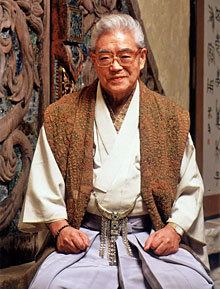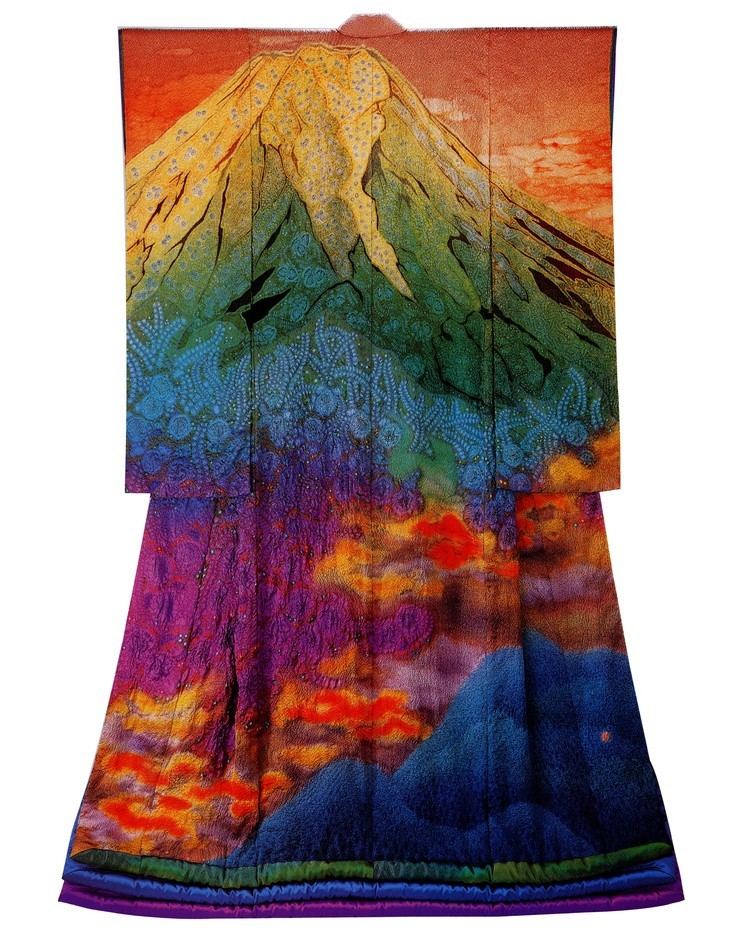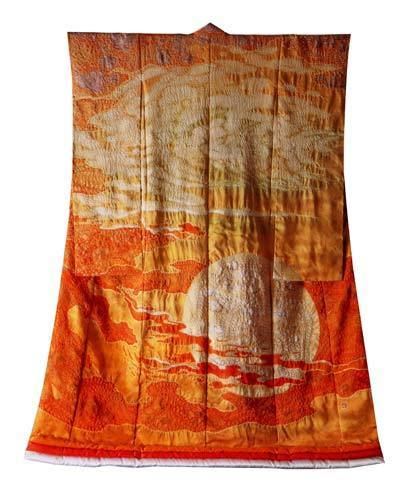Name Itchiku Kubota | Died 2003 | |
 | ||
Kimono by itchiku kubota
Itchiku Kubota (久保田 一竹, Kubota Itchiku)(1917-2003) was a Japanese textile artist. He was most famous for reviving and modernizing a lost late-15th- to early-16th-century textile-dyeing and decorating technique called tsujigahana (literally, flowers at the crossroads).
Contents
- Kimono by itchiku kubota
- Introduction to Itchiku Kubota Tsujigahana Part 1 Kubotas Kimonos
- Biography
- Exhibitions
- References

Introduction to Itchiku Kubota & Tsujigahana / Part 1 Kubota's Kimonos
Biography

Kubota left school at age 14 to become the apprentice of Kobayashi Kiyoshi, a Tokyo kimono artist who specialized in hand-painted yuzen (a paste-resist-dyeing technique). Kubota also studied other techniques for decorating fabrics, as well as Japanese-style landscape painting and portraiture. At the age of 20, he first saw a fragment of a textile in the tsujigahana style at the Tokyo National Museum, and decided to devote his life to recreating it. Because no instructions survive that explain how to reproduce the complex decorative techniques seen in tsujigahana, and because the silk fabric necessary for its successful production (nerinuki) is no longer woven, Kubota was forced to experiment on his own for decades.

In 1962, Kubota decided that there were too many technical problems surrounding his mission to recreate traditional tsujigahana. He would instead develop his own form of tsujigahana, called "Itchiku Tsujigahana," substituting a contemporary silk crepe fabric (chirimen) for nerinuki and synthetic dyes for natural colors. In 1977, when Kubota was 60 years old, he displayed his decorated kimono for the first time in an exhibition in Tokyo.

Kubota's grand scheme was a series of kimonos, called Symphony of Light, that would depict the "grandeur of the universe". An exhibit presenting part of the "grandeur of the universe" Kubota Itchi was shown in the Smithsonian Museum in Washington D.C. for 6 months in 1995 - the first time the Smithsonian presented an exhibit of a living artist. At the time of his death, he had completed 40 of his projected 80 kimono in the series. Kubota's unique vision for this series involved a decorative landscape design that flowed from kimono to kimono, resulting in a panorama of seasons and views.

Kubota's son and daughter continue their father's work at the artist's studio, Itchiku Kobo, in Tokyo.
Exhibitions

Kubota's work can be seen year-round at the Itchiku Kubota Art Museum in Kawaguchi-ko, Yamanashi, Japan.
2008-2009: The San Diego Museum of Art has presented a rare American exhibition of Kubota's kimono in Kimono as Art: The Landscapes of Itchiku Kubota, from November 1, 2008-January 4, 2009. The exhibition travelled to the Canton Museum of Art in Canton, Ohio (February 8-April 26, 2009).
